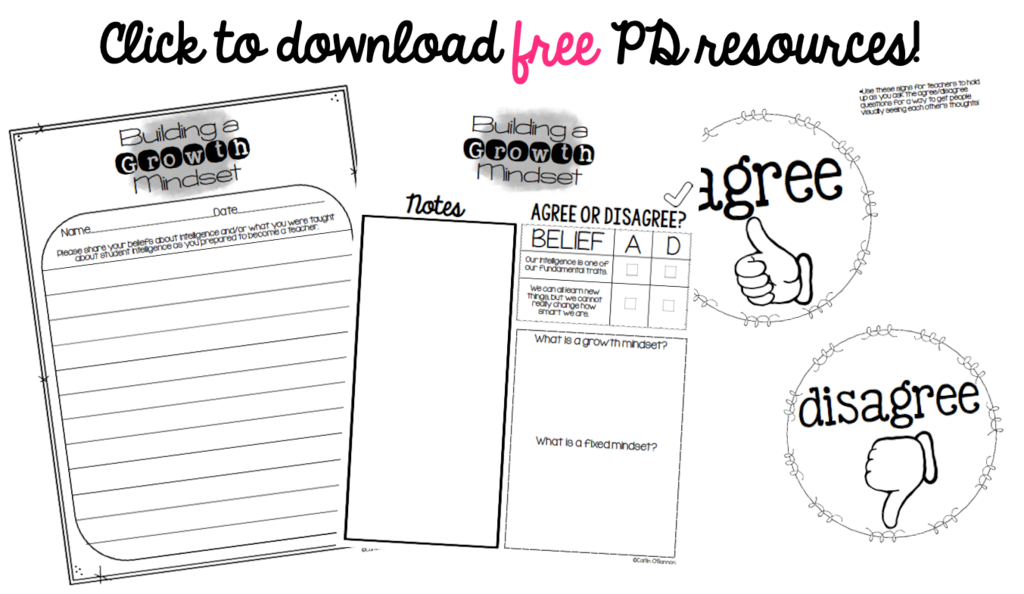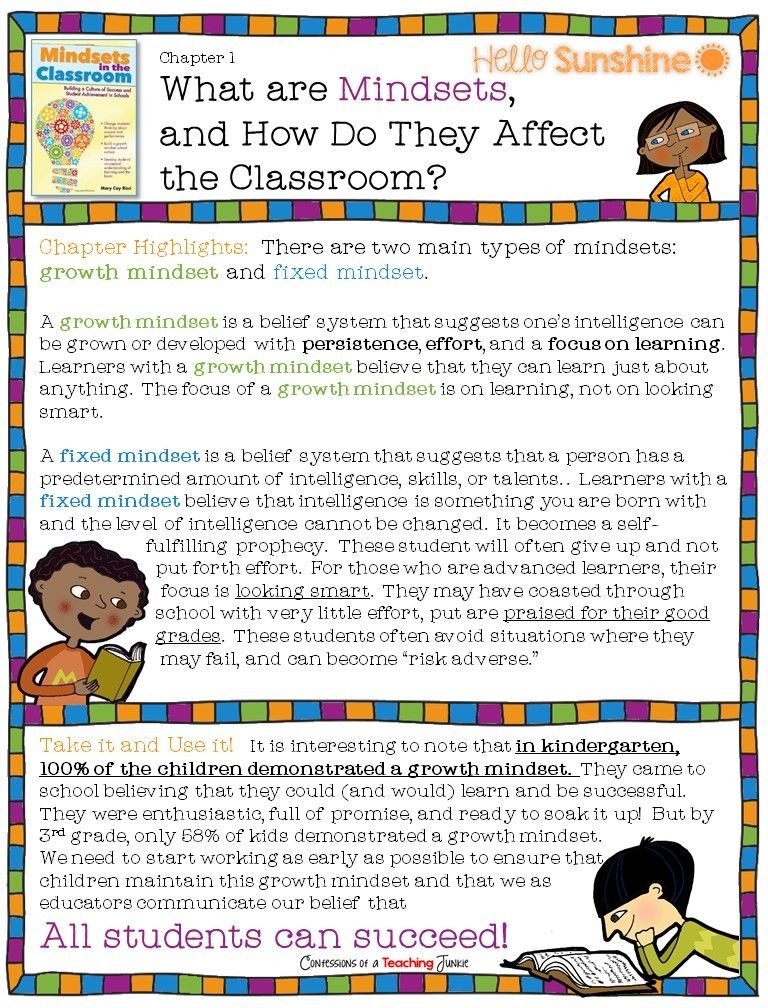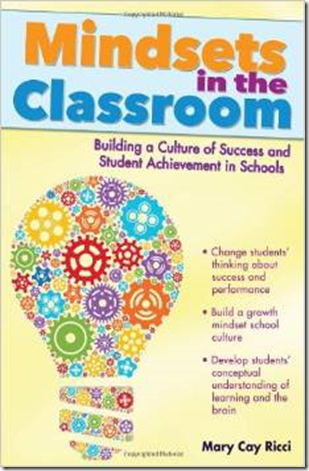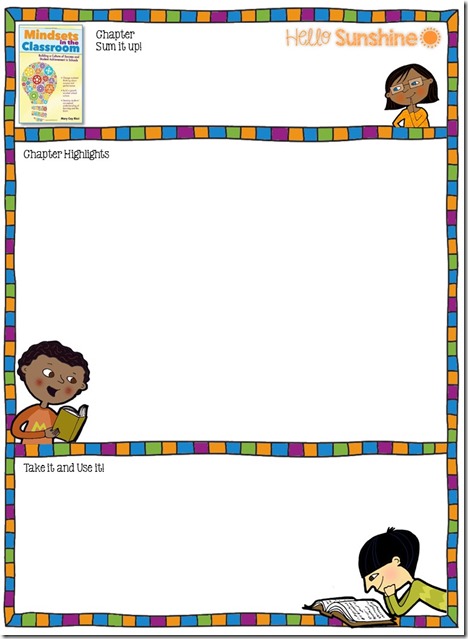Our Summer book study with
Mindsets in the Classroom has kicked off with a bang! We have already reached Chapter 2 and we are so thrilled to have all of you linking up with us to share your thoughts. We hope you will continue to join us all month long!
Let's dive in, shall we?
Chapter 2 immediately gives us some practical ideas for implementing a growth mindset culture in our schools.
Mary Cay Ricci writes, "The first step along the path to building a growth mindset culture is to begin to build a school culture that values intellectual growth with a staff who has internalized the belief that intelligence can be cultivated."
How can we accomplish this? By implementing 7 steps that will help lead teachers, staff, students, and parents to have a growth mindset:
1. Professional Development for All School Personnel
Before beginning growth mindset professional development, it is first important to determine what belief systems are held by staff at the present time. This will help gauge what they know and believe to be true about growth and fixed mindsets before they are taught new information about each one. Interestingly enough, when the author surveyed the staff she was visiting, the majority of less-experienced teachers tended to have a growth mindset while experienced teachers tended to have a fixed mindset. Kind of telling on how a teacher's mindset tends to change so drastically after continuing in the teaching profession for a few years.
Surveying your staff can be a quick and easy thing: If you're interested in getting this kind of discussion started at your school, I've created a freebie for you that you can use with your staff when introducing a growth mindset culture. Just click on the picture below to download!
2. Educate staff about malleability of the brain.
Many people believe that intelligence is a permanent attribute that we are born with and it can be very shocking to find out the opposite. One discussion you could have with your staff is to pose the question, "If you were given instruction, time, and had motivation, could you improve at a given skill?" This can get everyone talking and explain the concept of brain malleability on a relatable level.
You can also introduce teachers to the idea of growth mindset by talking about how one's emotions can be changed based on one's thinking, attitude, and behaviors.
Studies have shown that happiness and empathy can be practiced and developed!
Ricci gives an example of this by writing about a new curriculum called MindUP, which was developed by The Hawn Foundation and Scholastic in 2011. They believe we can train our brain to have an optimistic perspective. My Kindle version of the book had a link to the MindUP page where they had this fascinating video on the MindUP program according to teachers. Having their students participate in things like peaceful breathing exercises and brain breaks seemed to help their students remain calm, even in stressful situations like testing. Check it out here:
3. Educate staff about praise for students.
Educators must be more aware of the way we praise students! Praise them for their hard work and effort - not just about how smart they are. Kiddos just want to be noticed and acknowledged!
4. Educate teachers about the brain.
Many people have not been educated about how the brain works and how it relates to our learning. Ricci sums it up in a simple way for you to teach it to your staff: "Neurons make new connections when you learn something new. These connections become stronger with practice and effort."
In order to strengthen these neural connections, teachers need to consistently make connections to prior knowledge and experiences. I've found that when I connect my students' prior knowledge while introducing a new concept, it is easier for them to stay engaged and pay attention when you are talking about something that has related to their lives in the past.
I love the imagery used when describing a new neural pathway: it's like walking through a new, unexplored forest for the first time. The more you use it, the clearer the path becomes. It's such a great visual for what happens when students begin to have a deeper understanding of the concepts taught!
What are some ways that you like to connect prior knowledge and experiences with your students? We'd love to hear your ideas and comments below!
5. Teach students about the brain.
Students must understand that intelligence is constantly changing based on effort, persistence, and motivation.
This part was interesting to me. I never would have thought about teaching the kids about the brain in order to achieve a growth mindset. We always think of changing mindsets within ourselves, but to get your whole school on the same path, it's a great idea to teach our students WHY. To do this, the author suggests that lessons should be designed to teach kids about the brain's broader involvement with their five senses, physical activity, and everyday actions. This is so perfect to get kids moving, thinking, and engaged in the classroom. Think about how websites like
GoNoodle have revolutionized our classrooms by promoting brain breaks and movement. You could introduce the concept of how intelligence can be changed by promoting the use of their five senses and physical activity and then do a GoNoodle brain break with your kiddos like "Brainercise with Mr. Catman" as a fun example! (And if you've never seen it, it's a man with a giant cat mask in a classroom. Challenging students to do difficult brain exercises. And it is amazing. Haha.) Look for this icon when you head to GoNoodle!

6. Educate Parents
We all know that a huge key to increasing school culture is parent involvement and buy-in. However, it's often an aspect that can be overlooked since parents aren't at school the entire time like teachers and students are. Involving parents in a growth mindset discussion can help them view their children in a different light when it comes to intelligence or in how they speak to their kids.
7. Monitor, Evaluate, and Review School Protocols
Once your school has spent a good amount of time and training towards building a growth mindset, you can begin to evaluate how well your school and staff are doing. One idea you can implement is to establish "Look-fors"; student/teacher behavior when you walk through any room in the building. PLC's are also a great way to help teachers think and reflect on their mindsets with their individual teams and grade levels. You can give them time to discuss how they think they have changed or stayed the same in their mindset thinking throughout the year and how it has helped or hindered them.
The last story sort of saddened me because it is something we see all the time in schools and I'm sure we all have been guilty of this type of thinking at one time or another. A student wanted to be placed in an honors level English course to increase her love of literature and the department chair denied her request without even meeting the student simply based on the child's test scores. When we talk to parents about their student when they do not meet certain goals or criteria, it's important to try and phrase things in a way that doesn't say "we don't think your child is smart enough". If a student is showing self-motivation and a desire to want to do something, that goes a long way in determining whether or not they might be successful at something, regardless of previous test scores. We as teachers never want to make our students think that they are not smart enough. How devastating to a child! Having a growth mindset helps with this positive thinking and takes into account student motivation. Now, it doesn't mean that every parent or student is going to get what they want in these situations, but at least giving them a fair shot is all anyone can ask.
So what's the take away?
If this is something you find yourself strongly believing in, begin talking with your administrators and instructional coaches about planning professional development time to teach about growth mindset to build school culture. Use the free planning pages to get things started!
What were the things that stood out to you from Chapter 2? Is this something you are inspired to do at your school?















































